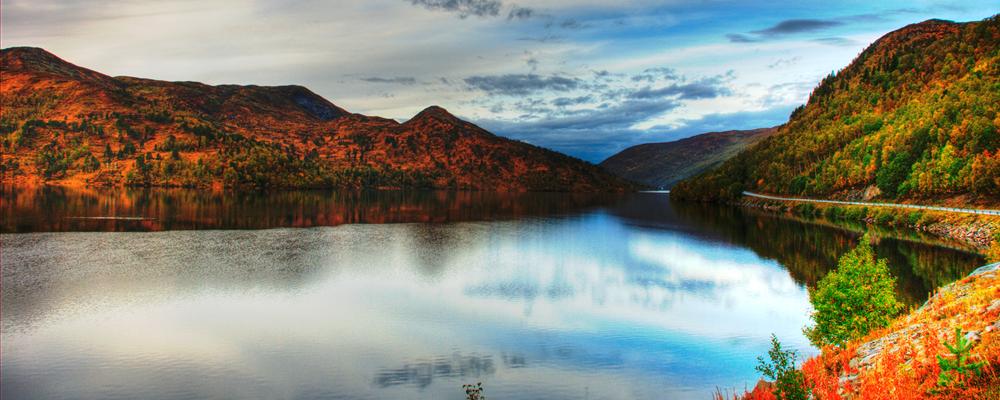
Norway
( 1 user review )Norway (Norge) is the westernmost, northernmost - and in fact the easternmost - of the three Scandinavian countries, located in Scandinavia west of Sweden. Best known for the complex and deep fjords along its west coast, it stretches from the North Sea near Denmark and Scotland into the Arctic Ocean where it borders northern Finland and the northwestern tip of Russia.
Understand
Norway is well known for its amazing and varied scenery. The fjords in the west of the country are long narrow inlets, flanked on either side by tall mountains where the sea penetrates far inland. Norway was an old Viking kingdom. Economically it is known for its oil and seafood exports.
Norway is a sparsely populated country, roughly the same land size as Great Britain or Germany. It has a population of only 4.76 million people but a land area of 385,155 square kilometers. Thus, for each inhabitant there is 70,000 square meters of land, but the vast majority of this land is a rocky wilderness which is completely unusable for agricultural purposes. As a result, Norway has a large number of completely unpopulated areas, many of which have been converted to national parks. Even outside the national parks, much of the land is unspoiled nature, which Norwegians strive to keep unspoiled.
In winter, cross-country skiing, alpine skiing and snowboarding are very popular. In summer, hiking and biking are obvious ways to enjoy the enormous mountain areas. For the adventurous, kayaking, wildwater rafting, paragliding, cave or glacier exploration are possible. Car tourists will enjoy driving along the fjords and mountains in the west or to the midnight sun in the north. In short, Norway has a lot to offer in terms of nature. Norwegians take pride in keeping fit and being sporty (a Sunday walk is not 20 min to the pub but rather three-four hours or more in the forest or up a mountain).
Norway is on a large peninsula shared with Sweden in the north of Europe. In the north, it also borders Finland and Russia. A large but loosely defined northern part of of Norway and Sweden, as well as parts of Finland and Russia outlines an area known as Sapmi (Sameland), which is where the most of the Sami people traditionally lived. Today, most of the Sami people live in the capital, Oslo.
A rugged landscape shaped by the Ice Age, shows forested hills and valleys, mountains, waterfalls, and a long coastline with fjords, islands, and mountains growing directly up from the sea. Norway's highest point is Galdhøpiggen, 2469m (8100ft) in the Jotunheimen region that lies midway between Oslo and Trondheim, but away from the coast. In the far north (Finnmark), you will find flatter open spaces. Several of the worlds greatest waterfalls are in Norway, particularly in the western fjords and the mountain region.
Norway's primary income is the petroleum industry in the North Sea. It also has several other natural resources such as fish and minerals, some industry, and a healthy technology sector. Politically, it is dominated by a widespread and continued support for the Scandinavian model, which means high taxes and high government spending to support free schools, free healthcare, an efficient welfare system and many other benefits. As a result the unemployment rate in Norway is extremely low (about 2%).
The Norwegian people have rejected membership in the European Union (EU) in two independent popular votes in 1972 and 1994, both times just by a few percent, after being vetoed out of membership by France in the 50s and 60s. However, being a member state of the European Economic Area and part of the Schengen agreement, Norway is closely connected to the EU, and integrated as a full member in most economic matters, as well as in customs and immigration matters. This is of great economic importance to Norway.
Norway is a Christian country, so Sunday is considered a holy day and most business are closed Sundays. Many gas stations are open 24-7, some malls are partly open and restaurants are normally open, but this varies from place to place. Christmas and Easter are major holidays in Norway, and most Norwegians are on vacation for more than one week. Formally it is a Christian country with a dominant Lutheran majority of near 90 %, but this number is skewed by a type of automatic membership of the state church, where people become automatic members when they're baptised or if one of the parents is a member. In reality, roughly 3/4 is atheist or agnostic. Because of this, Norway has become rather liberal in moral issues and thus more similar to southern neighbors like Denmark and the Netherlands. Prostitution is (as of 1.1.2009) illegal in Norway. Homosexuality is accepted by most people and recently (2008) same-sex marriage was given the same legal status as traditional marriage. For instance, a previous minister of finance and prominent figure in the conservative party is in partnership with a prominent business manager.
As one of the richest countries in the world and with a strong currency, most visitors should be prepared for greater expenses than at home. In addition, Norway has a very compressed wage structure which means that even the typical low skill work is relatively well paid. For the same reason, firms try to keep the number of staff as low as possible, even for low skill service work. On the other hand, many attractions in Norway are free of charge, most notably the landscape and nature itself.
Climate
Because of the gulf stream, the climate in Norway is noticeably warmer than what would otherwise be expected at such a high latitude. Almost half the length of Norway is north of the arctic circle. Summers can be moderately warm (up to 30 degrees C), even in northern areas, but only for limited periods. The length of the winter and amount of snow varies. In the north there is more snow and winters are dark; on the southern and western coast, winters are moderate and rainy, while further inland the temperature can fall below -25 degrees C. Some mountain areas have permanent glaciers.
In Northern Norway there is 24 hour sunshine in the summer and no sun at all at mid-winter. Although Southern Norway can not enjoy the midnight sun, at midsummer the night is very short even in Oslo - it doesn't get really dark at all.
When
Norway generally has big differences in daylight, temperature and driving conditions across seasons. Travellers are therefore advised to obtain specific information about seasonal variations when planning a trip. Note that seasonal variations crucially depend on region as well as altitude. Note in particular that the area with midnight sun (north of the arctic circle) also has winter darkness (polar night) when the sun does not rise above the horizon at all.
Norwegian weather is most pleasant during the summer (May to early September). If you like snow, go to Norway in December to April. Along the coasts and in southern part of West Norway there is little snow or frost and few opportunities for skiing even in winter. In the mountains there is snow until May and some mountain passes opens end of May. If you come in the beginning of May some passes can be still closed, but since the snow is melting very quickly, you will get a possibility to enjoy plenty of waterfalls before they shallow or disappear. And in this time the number of tourists is very small. Spring in Norway is quite intense due to the abundance of water (melting snow) in conjunction with plenty of sunlight and quickly rising temperatures (typically in May).
Be aware that daylight varies greatly during the year. In Oslo, the sun sets at around 3.30 PM in December. North of the Arctic Circle one can experience the midnight sun and polar night (winter darkness). However, even at Oslo's latitude, summer nights exist only in the form of prolonged twilight during June and July, these gentle "white nights" can also be a nice and unusual experience for visitors. The polar (or northern) light (aurora borealis) occurs in the darker months, frequently at high latitudes (Northern Norway) but occasionaly also further South.
Norway is a Christian (predominantly Lutheran) country and the Lutheran church is a government institution. Christmas and Easter are major holidays and many Norwegians are away from work for a full week or more. The major holidays are Easter, Christmas (Christmas Eve, Christmas Day and Boxing Day are all considered holidays), and the "common vacation" throughout July. In May there are several holidays including constitution day - the main national celebration and an attraction in itself. The Norwegian Constitution Day on May 17th is a celebration of the day in 1814 when Norway’s constitution was signed. The day is celebrated in every city and tiny village across the country - in the morning all the schoolchildren parade through their town or local community, singing, shouting and waving their flags - walking behind colorful banners that represent either their school or their class. Marching bands play. Everyone dresses up - many wear our colourful national costumes. After the Children's Parade, people usually gather in the school-yards for further celebrations: speeches, games for the kids, and food. The 17th of May is primarily the children's day - filled with ice cream, cotton candy, balloons and games. In most cities there are additional parades, usually in the afternoon, where all kinds of clubs & organizations take part - usually with a humouristic aspect. Notice the russ - 18-year-olds dressed in red, partying and celebrating having finished 13 years of school. The russ might appear somewhat calm & quiet on the 17th - but that's only because they've been partying for a month nonstop. The 17th of May offers an opportunity to sample some of the traditional Norwegian dishes - such as "Rømmegrøt", a sour-cream porridge, served with cured meat. Salmon is also a National Day favourite.
Public holidays (schools and offices closed):
-
January 1 - New Years day
-
Maundy Thursday (Holy Thursday, "Skjærtorsdag")
-
Good Friday ("Langfredag")
-
Easter Sunday ("påskedag")
-
Second day of Easter (Monday) ("andre påskedag")
-
May 1 - Labour day
-
May 17 - Constitution Day (National Celebration in the streets)
-
Ascension Thursday ("Kristi himmelfart")
-
Pentecost (Whit Sunday, "pinsedag")
-
Pentecost 2ed (Whit Munday, "andre pinsedag")
-
December 25 - Christmas Day ("juledag")
-
December 26 - Boxing Day ("andre juledag")
Note that many Norwegian holidays are celebrated on the day before (Holy Saturday, Christmas Eve etc). On Christmas Eve ("julekveld", "julaften"), New Years Eve ("nyttårsaften"), Holy Saturday ("påskeaften") and Saturday before Pentecost ("pinseaften") shops close early. Norwegians also celebrate midsummer at St. John's day on June 24 by making a bonfire late evening the day before - "St.John's Eve" ("St.Hansaften" or "Jonsokaften").
Regions
- East Norway - actually southeast, the region surrounding the capital Oslo, where the largest number of people live
- Middle Norway - with the ancient city of Trondheim
- Northern Norway - also with great fjords, the midnight sun and the ancient Sami culture
- South Norway - the gentle coastline
- Svalbard - Arctic islands near the polar ice
- West Norway - with the famous fjords and Bergen
Cities
-
Oslo - the capital and largest city of Norway, with museums of national importance, a beautiful setting and lively nightlife and cultural scene.
-
Bergen - old Hanseatic trading center with a rich culture and dramatic scenery, Norway's second largest city. Wonderfully cute wooden buildings, a magnificent mountain setting and tons of nightlife and atmosphere make Bergen the most enjoyable city in Norway. This is your gateway to the western fjords. The city has been dubbed "the rainiest city in Europe" with an average of 250 days of rainfall a year. Bring an umbrella.
-
Bodø - The gateway to the magnificent Lofoten islands. And the place of Saltstraumen, the worlds strongest maelstrom.
-
Drammen - Once known as industrial and grimy, but recent refurbishing has made Drammen an enjoyable side trip from Oslo.
-
Fredrikstad - A magnificent old town stands out from the rest of the rather nondescript city. Brilliant as a day trip from Oslo.
-
Kristiansand - The jolly capital of the South.
-
Stavanger - The fourth largest city, and the third largest urban area in Norway. Commercially important due to the oil business. The wooden, cobbled central area is one of the most charming places in Norway. Home to one of Norway's medieval churches, you can also visit Iron Age homes, stone age caves, and sites where the Viking kings used to meet at Ullandhaugtårnet. Stavanger is where Erik the Red was born.
-
Tromsø - City with the northernmost university in the world, a magnificent, modern cathedral and absolutely no polar bears roaming the streets.
-
Trondheim - Once the capital of Norway, famous for its stunning cathedral (Nidarosdomen). Wonderful riverside wharfs, wooden buildings and the best student nightlife in Norway give beautiful, leafy Trondheim its charm.
Other destinations
-
Ålesund - A splendid Art Nouveau centre in the very western coast of Norway
-
Geirangerfjord - Part of the Storfjorden, with perhaps the most stunning fjord landscape in western Norway. The fjord is on the UN's list of World Heritage places
-
Jostedalsbreen - The largest glacier on the european mainland.
-
Jotunheimen - A majestic landscape and home of Norway's highest mountains.
-
Lillehammer - Picturesque 1994 Winter Olympics site
-
Lofoten - Experience the midnight sun in this traditional fishing district in the northern province with islands and mountains.
-
Nordkapp - This cliff is the northernmost point of continental Europe. Excelent place to experience the midnight sun.
-
Sognefjorden - Glaciers, mountains and picturesque towns are but a few of the sights on the Sognefjord. Flåm and Nærøyfjorden (also a UNESCO World Heritage site) are parts of the mighty Sognefjorden system.
-
Røros Old UNESCO protected mining town.
-
Sognefjorden - Glaciers, mountains and picturesque towns are but a few of the sights on the Sognefjord. Flåm and Nærøyfjorden (also a UNESCO World Heritage site) are parts of the mighty Sognefjorden system.
Get in
Norway is part of the Schengen countries, meaning you can travel from any other Schengen country with few or no border checks. Most citizens of industrialised nations do not need a visa to enter Norway for tourism or short business trips. You can find all the timetables you need from Rutebok timetable service.
By plane
Oslo
Oslo Airport Gardermoen (OSL) is the biggest airport in the country and the main international hub, and is located 60 km north of Oslo. The airport had 21,3 million passengers in 2007 and is served by many major international and all domestic airlines.
The fastest way to reach the city of Oslo is with the Airport Express Train, which takes 19 minutes. See Flytoget .
The airport has scheduled flights to around 100 destinations abroad and 24 destinations in Norway. From the United Kingdom there are direct services to Oslo Gardermoen from:
-
London Heathrow (Scandinavian Airlines and British Airways)
-
London Gatwick (Norwegian Air Shuttle)
-
Manchester (Scandinavian Airlines)
-
Edinburgh (Norwegian Air Shuttle)
-
Aberdeen (Eastern Airways)
From Ireland:
- Dublin (Scandinavian Airlines, Norwegian Air Shuttle)
From the United States:
-
New York Newark (Continental)
-
Philadelphia (US Airways)
From Australia and New Zealand, the quickest connection is via Bangkok. Thai Airways flies nonstop from Oslo to Bangkok.
Sandefjord
Sandefjord Lufthavn, Torp (TRF) is located just north of Sandefjord, 115 km to the south of Oslo, and is Ryanair's destination airport in Oslo. Here you can spend as much on the coach trip (about £10) as on the flight! Ryanair now operate another service, from London Stansted to Haugesund on the west coast.
Sandefjord Airport Torp has scheduled flights to 14 destinations in Europe and 3 destinations in Norway.
From the United Kingdom there are direct services from:
-
London Stansted (Ryanair)
-
Birmingham (Ryanair)
-
Liverpool (Ryanair)
-
Glasgow Prestwick (Ryanair)
-
Edinburgh (Ryanair)
From Ireland:
- Dublin (Ryanair)
Airlines operating at Sandefjord Lufthavn, Torp: Ryanair KLM Widerøe Wizz Air
Moss
Moss Airport, Rygge (RYG), recently opened and located 60km south of Oslo carries many flights by Norwegian that can be comparably cheaper than flying into Gardermoen. Either an express bus service (120NOK) or a free local bus to Rygge train station, then a regional service train (119 NOK) can get you into Oslo in roughly just under an hour, and both services are timed around arrivals and departures of flights.
Airlines operating at Moss lufthavn, Rygge: Norwegian Air Shuttle Ryanair
Norwegian Air Shuttle flies to five domestic and 12 international destinations. Ryanair will fly to eight European destinations when their initial route programme fully commences in November 2009. This includes a twice-daily flight to London Stansted.
Stavanger
Stavanger airport, Sola has scheduled flights to/from London, Amsterdam, Copenhagen, Frankfurt, Berlin, Paris, Krakow, Madrid, Nice and some other European cities. The cheapest alternative tends to be Norwegian, a low-cost airline with tickets as cheap as €20.
From the United Kingdom there are direct flights from: London Heathrow (Scandinavian Airlines) London Gatwick (Norwegian Air Shuttle) Newcastle (Eastern Airways, Widerøe) Aberbeen (Scandinavian Airlines, Eastern Airways and Widerøe)
Bergen
Bergen Airport, Flesland has scheduled flights to/from major European cities as London, Copenhagen, Amsterdam, Berlin, Paris, Stockholm, Prague, Warsaw and other cities.
Apart from to previously mentioned airports there are domestic flights to Trondheim and Tromsø.
From the United Kingdom there direct flights from: London Gatwick (Scandinavian Airlines and Norwegian) Newcastle (Easter Airways) Edinburgh (Widerøe) Aberdeen (Eastern Airways and Widerøe) Kirkwall (Flybe)
Trondheim (Trondhjem)
Trondheim can be reached by direct flights from severeal European cities, notably Amsterdam, London and Copenhagen.
From the United Kingdom there are direct flights from London Stansted with Norwegian Air Shuttle.
Tromsø
From the United Kingdom there are direct flights from London Gatwick with Norwegian Air Shuttle.
By train
There are trains from Sweden to Oslo, Trondheim and Narvik, with onwards inland connections.
For Oslo, daily service from Stockholm, as well as an every-night night train running through Gothenburg. The night train also carries rail cars from Malmö. For Trondheim, the Nabotåget service from Östersund corresponds with one day and one night service from Stockholm, as well as the train from Sundsvall. For Narvik, two trans daily run from Stockholm via Kiruna. Both are overnight.
By bus
Several international bus lines run into Oslo from Sweden, the major operators being Eurolines, Swebus Express and Säfflebussen. Service to Gothenburg and Copenhagen is almost hourly. The service to Stockholm is also far more frequent than the train.
For budget travelers be sure to check out lavprisekspressen.no for cheap bus tickets between the large cities in Norway, Denmark and Sweden.
The minibus service between Kirkenes and Murmansk run three times per day. Contact Grenseland/Sovjetreiser (yes, they are actually still called that!) in Kirkenes for booking.
Other coach lines exist between Sweden and Bodø and Mo i Rana, as well as between Denmark and Stavanger.
By car
It is possible to enter by road from Sweden, Finland, or Russia. If you are staying for more that a few days in a region with tollbooths, getting an AutoPass RFID box for your car may pay itself in a very short time (and you don't have to fill out all those forms over again and/or fiddle with change). The same AutoPass box can be used in all tollbooths marked AutoPass all over Norway and Sweden.
By boat
From Belgium
DFDS operates a cargo line from Ghent to Brevik with limited passenger capacity which is normally for truck drivers. There are departures once or twice a week. Note that the ferry may be scheduled to arrive at Brevik in the middle of the night.
From Germany
Color Line run a daily ferry from Kiel to Oslo. The ferry leaves Kiel at 1.30PM and arrives in Oslo at 9.30AM, the following day. The ferry terminal in Kiel is on Norwegenkai, which is a short walk across the bridge from Kiel's main railway station (note that the bridge may at times be closed for pedestrians due to ship traffic). At the Oslo end of the journey, the terminal is located at Hjortneskai, which is just west of the city. There is a bus from the terminal to the city center, which departs shortly after passengers disembark.
From Denmark
Several companies run from various harbours in Denmark (Frederikshavn, Hirtshals, Copenhagen) to various Norwegian harbours (Oslo, Larvik, Kristiansand, Stavanger, Bergen).
Color Line traffic from Hirtshals to Kristiansand, Larvik and from Frederikshavn to Oslo. Fjord Line traffic from Hirtshals to Stavanger and Bergen. DFDS Seaways traffic from Copenhagen to Oslo.
From England
Thompson Cruise ships operate from Harwich and visit Flåm, Bergen, Molde, Hammerfest, Nordkapp, Tromsø, Lofoten Islands, Geiranger and Ålesund in Norway. The duration of the cruise varies from 5 days up to 2 weeks. Sailing time from Harwich to south Norway is 1.5 days. On board the cruise ship are a number of restaurants, bars, casinos, cinemas and also a stage show to keep you entertained during the journey. There are various classes of cabins available, ranging from shared rooms to singles, doubles and luxury suites.
There are no ferry routes to the UK from Norway anymore. There used to be a ferry between the Bergen, Stavanger and Newcastle.
From Shetland, Faeroe Islands and Iceland
Smyril Line used to operate a once-weekly service to Bergen. This service now only operates Denmark-Shetland-Faroe Islands-Iceland.
Get around
Norway is a big country and getting around, particularly up north, is expensive and time-consuming. The best way to see the Norwegian wilderness and countryside is by having access to your own vehicle. This way you can stop wherever you want, admire the view and venture onto smaller roads.
By plane
Norway's craggy coastline makes roads and trains slow, so domestic flights are very popular and, at least by Norwegian standards, competitively priced. The largest operators are SAS Scandinavian Airlines , Norwegian and Widerøe .
It is especially in northern Norway, where towns and cities are fewer and further between, that air travel is clearly the most convenient method to get from town to town. Planes between the small airports are small, and they generally have several intermediate stops along the route to embark and disembark passengers. Unfortunately, it is also in these areas where ticket prices can be most expensive.
Flights in southern Norway are cheaper than in northern Norway, and even though this area has better roads and rail, planes are generally faster than taking the train or bus. There are however no air routes between the cities within 200 km from Oslo, use the train or bus for this kind of travel.
If you plan to fly to the many smaller towns in Northern or Western Norway you should consider Widerøes Explore Norway Ticket (Unlimited air travel for 14 days in summer for less than a full price return ticket.).
By train
Norges Statsbaner (NSB) operate all railways. Norway's rail network basically connects Oslo to other major cities, there are no rail lines North-South in West Norway between Stavanger and Trondheim, and there are no rail lines North-South in North Norway north of Bodø. These main lines run several times a day:
-
Oslo - Kristiansand - Stavanger (runs inland from Drammen to Kristiansand, connections to Arendal and Lillsand)
-
Oslo - Skien (serving coastal towns south-west of Oslo)
-
Oslo - Bergen (across the mountains via Finse, connections to Flåm)
-
Oslo - Trondheim (Dovrebanen, through Lillehammer and Dombås)
-
Oslo - Sarpsborg - Halden
-
Oslo - Askim - Sarpsborg
-
Oslo - Røros - Trondheim
-
Trondheim - Bodø (through Trondheim airport, connections to Sweden)
Trains are generally well-maintained and comfortable with toilets, vending machines etc on board. Trains are more comfortable than buses and with better views, but buy tickets in advance to get a good price.
You can buy a Norwegian Rail Pass to travel cheap by train through Norway.
If your itiniary is fixed and you don't have too many destinations, it might be cheaper to buy ordinary tickets online . If ahead in time you will usually get tickets at Minipris kr 199-399, unlimited distance, no stop-over. When buying online, you can choose ticket delivery at the station or at the train, the latter means you only need to know your seat number, the train steward has your ticket. You should always buy ticket before entering the train.
Night trains operate Oslo - Bergen, Kristiansand, Bergen, Trondheim and Bodø. You get ordinary seat and blanket. If you choose to order sleeping compartment, you pay for the compartment, not the bed: 2 people same price: kr 750.
You can add komfort to your ticket for kr 75, which means a little more room for you legs, free coffee, papers and power socket.
Unlike much of Southern Europe, Norway does not have a high speed rail system, except for the route between Oslo and its airport. Attempts at implementing high speed trains have been failures. (The sleek blue and silver high speed trains still operate, just not at high speed). Therefore, a journey between the two largest cities, Bergen and Oslo, still takes as much as six and a half to seven and a half hours.
Most long distance (regional) trains leave several times a day. Don't forget you'll have to make a reservation on long distance trains (Oslo-Bergen, Oslo-Stavanger, Oslo-Kristiansand, Oslo-Trondheim, Trondheim-Bodø). This will cost you kr 50 per person extra, if it's not already included in your ticket. As a rule of thumb, the trains cover a bit under 100 km in one hour and charge a bit over kr 100 for the distance.
In eastern Norway, where cities are closer together, there are several people who make a daily commute, and hence many of these cities have more frequent train service with hourly departures much of the day. This includes the cities in the counties of Østfold, Vestfold as well as Gjøvik, Hamar and Lillehammer. In general, these trains do not have ordinær class seating reservations available, but it is still possible to upgrade to komfort. If you get even closer to Oslo, there are local trains which may have departures as often as every 30 minutes. Local trains never have seating reservations, nor do they have a first class section. Local trains also go between Bergen and Voss, Stavanger and Egersund and around Trondheim.
Generally, the trains are most crowded at the beginning and end of the weekend, and that means Friday and Sunday evening. Shortly before and at the end of major holidays like Christmas/New Year and Easter, trains are usually very busy. If you try booking for these days at a late time, you may find all the cheap tickets sold out. Furthermore, the seat you reserve may be among the least desirable, that is, facing backwards, without recline, and facing towards and sharing the legroom with other passengers.
By boat
Car ferries ("bilferge") are an integral part of the road network in coastal regions. Prices and time vary with the length of the crossing and amount of traffic, but expect 150 kr and 30 min as a standard fjord crossing with two adults in a normal car. Nearby camping sites and the ferries themselves will often have timetables (booklets) for other ferries in the region. On the main roads ferries are frequent during daytime, typically every half hour. Reservations are usually not needed, Norwegians typicallly drive to the ferry quay and wait in line until the ferry docks. According to Norwegian terminology, these ferries depart from "ferry quays" ("ferjekai"/"fergekai"), rather than from "ports" or "piers". Except for a few popular tourist destinations, ferries in the coastal regions normally have capacity to take all cars waiting. Ambulances, livestock transport and scheduled buses have priority. On main roads tourists typically don't have to worry about timetables as there are frequent departures. Note however that most ferries don't run after midnight or they run only every second hour.
Stretches with lots of ferries are desierable when bicycling, as the ferries are cheap for bicyclists and offer an often well-deserved break with a great view. Except for some of the shortest crossings (10 min), ferries typically have cafeterias serving coffee, cold beverages, sandwiches and some hot food. Due to numerous deep fjords and islands, driving in West Norway and Northern Norway as rule (with few exceptions) involves ferries. Although car ferries are very reliable and operate with spare capacity, tourists should allow plenty of time on stretches including ferries. Note that ferries on unusually long crossings (several hours) or ferries crossing open stretches of sea are more frequently delayed or cancelled.
In regions with lots of fjords and islands, that is along all the coast from Stavanger to Tromsø, an extensive network of catamaran expressboats shuttle ("hurtigbåt") between towns and cities, and connect islands otherwise accessible only with difficulty. Service and prices are comparable with trains. Check in advance if you want to bring a bicycle.
One option particularly popular with tourists is Hurtigruten ships that hops along the coastline from Bergen all the way to Kirkenes, taking five and a half day for the whole journey. Cabins are expensive and mandatory for multi-day journeys, but deck fares are more reasonable and there's even a 50% off discount with Inter Rail. Prices are summed up for all chargeable elements like persons, fuel charge (app. 1/30 of a person), bike (app. 1/20 of a person), car, cabin (app. 125% of a person). Reservations are recommended for cabins and cars; on deck is usually enough space for persons and bikes.
By bus
An extensive range of express buses connect cities all over Norway and even most national parks. Nor-way Bussekspress , Timekspressen and FFR / Veolia Transport Nord (northern Norway) are the biggest operators. Fjord1 also runs some express routes. The frequency of buses may vary between summer and winter, but times do not, so buses are driving on icy roads as fast as in perfect summer conditions - you get used to it.
Timekspresseneven runs the Oslo-Drammen-Kongsberg-Notodden service every hour, round the clock, every day - even at midnight on New Year's eve... However, this frequency does not apply to rural areas: Buses often leave just once a day, or possibly even more infrequently. During weekends, bus service is reduced to a minimum in northern Norway, even in high season. Hence, plan ahead!
All schedules are to be found various places on the Internet. You may try the extrensive connection search Reiseplanlegging for Troms - available only in Norwegian, but you'll manage it (avganger=station details, fra=from, til=to, avgangstid=start time, ankomstid=arrival time). Note that some mountain passes are closed all winter, and buses covering these typically run May-September only.
All major cities have some sort of city bus system, mostly quite good, but not always. Oslo also has local trains, metro and trams, Trondheim has local trains and one tram line, while Bergen has a trolley bus line and a funicular railway, as well as local trains. Stavanger/sandnes also has a local train system.
By taxi
Traveling with cab in Norway can be very expensive, and in most big cities it's not necessary as bus, tram and train are easier. If you land at Oslo Airport Gardermoen OSL, then as stated above the easiest way to get to Oslo is by train. Although most taxi companies offer a flat rate fee for travel between Oslo Airport and Oslo S train station. If you do find yourself wanting to travel by cab, make sure you use a reputable cab company. A few of these companies are
-
Oslo Taxi
-
Christiania Taxi
-
Asker og Bærum Taxi
-
Trondheim Taxi
-
Bergen Taxi
Most cities have their own taxi service.
There are also so called "Pirate Taxies", they are usually driven by regular people, with no discernible signs of being a taxi service. They usually look for tourists and will try and get more money from the trip then most taxi companies would charge. In some remote cases they can also end up robbing you and leave you stranded. There are fewer around as the police have cracked down on these types of services.
By car
Norway has right hand traffic, as the rest of mainland Europe. Driving is generally easy as traffic is calm, and most drivers are disciplined and law abiding, although moderate speeding is common on highways. However, some city-centres (such as Bergen and Oslo) may be confusing to navigate for the first time visitor. Traffic is generally light except for city centres and a handful of stretches on main roads (notably E18).
Gas is expensive in comparison to North America, starting at around US$6 per US gallon as of Feb 2009. Manual transmission is regarded as standard in Norway and is found in most private cars. If you prefer to rent a car with automatic transmission, make sure to order one. Renting a car is very expensive, but can be essential for easy access to some of the more rural areas, although most areas have a good reliable bus service. If you live in Europe, consider bringing your own, but if you arrive during winter (November - April), be aware that winter tires are necessary and required by law. DO NOT try to drive without, even if you don't expect snow or ice. Winter tires must have a minimum of 3 millimeter deep grooves. Cars heavier than 3500 kilograms are required to bring snow chains during winter and whenever snow or ice can be expected, a minimum of 5 millimeter tread pattern depth is recommended for trucks and heavy cars.
Rules and regulations
Norwegian roads are among the safest in the world due to extensive training of drivers, low speed limits and strict enforcement of rules. The Norwegian police is generally very strict on all kinds of aggressive driving, such as risky overtaking. The police also control traffic from unmarked cars.
-
The Give Way rule is universal in Norway. On roads without the "Yellow Diamond" sign, all traffic from your right hand side has the "Right of Way" on to the road so BE AWARE! There is no concept of minor and major road, so the right hand rule means that you must yield to traffic from smaller roads to your right. This rule does not apply when leaving a parking space. Buses however have priority when leaving a bus stop and the speed limit is 60 kmh or less. Trams (and other rail-bound vehicles) have right of way even from the left hand side (Oslo has an extensive network of trams).
-
There is a growing number of roundabouts in Norway. There are no special rules for roundabouts, but virtually every roundabout have give-way signs for traffic entering the roundabout, that is, in practice cars already in the roundabout have priority. Because Norway has right hand driving, traffic circles counter-clockwise in the roundabout (look to the left).
-
Some mountain roads are not wide enough for two cars to meet. Look for signs with a large M which indicates a passing point. Traffic going down hill has to give way to traffic going up hill even if that means reversing.
-
Headlights are mandatory even during daylight. A country ID sticker on the back of the vehicle and an EN standard hazard waistcoat is required in the vehicle, reachable from the drivers seat. Spare bulbs are a good idea.
-
Pedestrians expect you to stop for them at marked crossings and you may be fined if you don't. This rule is strictly enforced.
-
Speeding is taken very seriously and even 6 kmh over the limit can result in a large "on the spot" fine. Fines for speeding can be up to 8000 NOK (1000 euros). There are also many unmarked grey speed camera boxes (facing the traffic) on all roads.
-
The general speed limit is 80kmh/50mph in the country side, and 50 kmh in urban areas/towns. Note that there are no specific rules for change of speed limit (as in some other countries) when driving conditions change. The driver is expected to adjust speed downward to a safe level in for instance fog, heavy rain or snow.
-
Don't drink and drive. Your blood alcohol concentration must not exceed 0.2 ‰ (per mil). One small beer can be enough. This rule is strictly enforced.
-
On typical Norwegian two-lane road with a narrow shoulder, overtaking is only allowed on long straightaways with plenty visibility. Overtake only if really necessary, consider alternatives like taking a short break.
-
Use your car horn only in case of emergency.
-
Make sure to keep a minimum of three seconds distance to the vehicle in front of you.
-
For your own safety, wear the seatbelt at all times (also required by law).
-
Road signs are essentially based on symbols (European standard) or codes, not explanatory text. Typical codes are: "8-16" (which means that the sign is valid on work days from 8 in the morning to 4 in the afternoon), numbers in parantheses "(8-16)" refers to Saturdays while numbers printed in red refers to Sundays (and other holidays). Because asphalt is often covered by snow or slush in the winter, Norwegians rely on signs rather than markings on the asphalt.
Roads and driving conditions
Norwegian roads have varying quality. The main roads are the European highways indicated with an "E" in front of the number. For instance E6 is the main north-south corridor from Sweden via Oslo to Kirkenes in the very east of Northern Norway. European highways connect cities, regions and countries. E18 connects Kristiansand and towns in South Norway to Oslo and Sweden. E16 connects Bergen to Oslo (via Flåm and Voss), road 7 is an alternate route to Bergen (via Hardangervidda). E39 is the coastal main road from Kristiansand via Stavanger, Bergen and Ålesund to Trondheim. The E-roads are excellent for navigation. Other main roads (national highways, "riksvei") have low one- or two-digit numbers, the most important of these are indicated with white fonts on green background (as opposed to black on white for most highways). Note however that the importance of the road does indicate quality: even the E's may have narrow and slow sections.
Asphalt cover on Norwegian roads is usually coarse and don't get very slippery when wet as can be experienced in some other countries. Note however that studded winter tyres tend to eat asphalt during the winter leaving deep tracks (or furrows). This can make the car sideways unstable, particularly in high speed, and if filled with water tyres may float on the water making the car difficult to control (as if driving on ice or snow). When driving downhill steep mountain roads it is best to use a low gear and let the engine control the speed. Breaks can overheat causing the break fluid to boil.
Moose/elk ("elg") and red deer can run onto the highway particularly at dusk and dawn so take extra care if driving at those times, particularly through forest. Red deer can also jump onto the highway without warning, particularly in Western Norway during late autumn and winter, special "crossing points" have been constructed several places, be aware. Rein deer may happen to walk on the road in Northern Norway. Note the warning signs. The elk, the most dangerous animal on the roads, is most active at full moon, after heavy snow fall and at dusk/dawn.
Driving a car in winter conditions may be a real challenge without proper training and experience, this particularly applies to mountain passes all over Norway as well as other roads in Northern Norway. The golden rule for driving on snow, ice and slush: don't rush. Breaking distance increases dramatically, increase distance to the car in front of you from the standard 3 seconds to a 5-6 seconds or more. Inexperienced drivers should drive very careful until they get used to the conditions and the car, experienced drivers always "feel" the contact between tires and road. A number of mountain roads are frequently closed temporarily during bad weather, and the authorities routinly issue road information on radio, TV and internett. During blizzards on some roads you are only allowed to drive in a line behind a heavy snowplow, a method called "kolonnekjøring", you are then obliged to wait at a gate or sign until the snowplow arrives. Always obtain specific information about mountain roads the day and hours before going. Don't hesitate to ask locals or call 175 for last minute information. Always bring enough clothes and food, always calculate plenty of time. Be prepared to cancel or postpone trips in winter.
Some mountain passes, including popular roads around Geiranger are totally closed during winter (typically Nov-May). Other mountain roads may be closed for shorter periods (several days or only one night) during bad weather. These roads are always closed during winter ("vinterstengt"):
-
Road 55 Sognefjell (Nov-May)
-
Road 51 Valdresflya (Dec-April)
-
Road 63 Geiranger (Nov-May)
-
Road 63 Trollstigen (Oct-May)
-
Road 13 Gaularfjell (Dec-May)
-
E69 Nordkapp (North Cape) (Oct-April)
Visitors frequently underestimate distances and driving time in the Norwegian landscape. Key distances by car:
-
Oslo-Bergen 500 km/ 8 hours
-
Oslo-Stavanger 540 km/ 8 hours
-
Oslo-Trondheim 500 km/ 8 hours
-
Trondheim-Bodø 700 km/ 12 hours
-
Oslo-Geiranger 450 km/ 7 hours
-
Oslo-Flåm 350 km/ 5 hours
-
Bodø-Tromsø 600 km/ 10 hours
-
Bergen-Geiranger 400 km / 7 hours
-
Bergen-Flåm 170 km/ 3 hours
-
Ålesund-Trondheim 300 km/ 6 hours
By bicycle
The bicycle seat is a one of the best ways to experience the landscapes of Norway. The sport is becoming increasingly popular in Norway, especially since the succes of Norwegian cyclists like Thor Hushovd. As a result, Norwegians generally have a very positive attitude to bicycle tourists, so you'll have a lot of small talk. Norwegians themselves prefer to ride on nice or even expensive bicycles: in most cities good bicycle shops can be found.
You'll find quite a number of travel diaries online. Only few specific cycle tracks exist, mostly in the big cities, and they are not fully interconnected. Except for densly populated areas, they can mostly be ignored. You can safely use almost every road, as speeds are relatively low and the vast majority of drivers are responsible and patient. At places where a highway is built, the old road is often redesigned as a cycle route.
In most of Norway, cycling can be physically challenging, due to steep climbs and strong winds. Your equipment should be lightweight and aerodynamic. You will need a wide range of gears: a ratio of 39-27 for a strong cyclist without luggage or even 22-32 for a normal cyclist with luggage is necessary on many slopes. Your brakes should be of high quality and you'll need spare brake pads when doing a trip of more than a few days. Lights are necessary because of the many tunnels. Because of the winds, it is advisable to avoid wide panniers and loose fitting clothes. A lightweight recumbent should be considered as a serious option for those experienced with this type of bicycle, especially when cycling south to north.
The roads are generally paved well, although gravel roads are sometimes unavoidable. As long as you don't go off-road, you will not need suspension or grooved tyres.
Because of the long distances and numerous hills, bicycle tourists are advised to plan well and be prepared to use public transport for the less interesting stretches. Special attention should be given to tunnels, as some of them are forbidden for cyclists, as are a few roads. An online map of tunnels can be found . The tourist information also has a map of those forbidden routes. When hiring a bike, you can consult the person that lends you the bike concerning the track you want to take. In many cases, signposts indicate the route for cyclists and pedestrians around forbidden roads or tunnels.
Ferries take bikes for free or minimal charge, on trains you've to pay a fee and in buses, bikes are sometimes forbidden and in all other cases only transported if there's enough space (no fee or same like a child). The Norwegian Cyclist Association offers information.
By thumb
Hitchhiking in Norway is best on the the routes from Oslo-Trondheim (E6), Oslo-Kristiansand (E18) and Kristiansand-Stavanger (E39). However, near the cities these are now motorways and it is not possible to stand at the road itself. Hitchhiking is not that common in Norway. If hitchhiking is ever safe, it's pretty safe in Norway, however it's difficult to get a lift and it may be very slow.
When waiting make sure to stand in a place where the vehicles can see you and have a safe opportunity to stop. Ferry ports and main fuel stations are good places to try. Stretches with low speed limit (50-60) is generally better than high speed as drivers find it more cumbersome to make a halt. Drivers of heavy trucks in particular prefer to keep a steady speed. Roadside cafeterias where truckers have a break can be good place to ask for a lift.
Talk
Norwegian is the official language of Norway. The language is very close and mutually intelligible with the two other Scandinavian languages, Danish and Swedish, and more distantly related though not mutually intelligible in spoken form with Icelandic and Faroese, but completely unrelated to Finnish. Sami is a minority language which has official status in some Northern regions. Road signs and other public information is then provided in both Norwegian and Sami (note that Norwegian and Sami place names may differ, maps will typically use the Norwegian name). Sami is related to Finnish, but not to Scandinavian languages. There is no standard spoken Norwegian and a wide range of dialects is used even in public broadcasting, and there are even two standard ways of writing it, Bokmål and Nynorsk.
Most Norwegians below 60 speak English well. So, learning any Norwegian before your travel is not necessary. Just asking the person you are talking to if he or she speaks English will suffice. For the last 2-3 decades a lot of Norwegians have spent at least a few years learning either German or French at school, however this is nowhere near the number of people who speak English. Spanish and Italian are now growing increasingly popular, but almost exclusively at larger schools in the largest cities.
In addition, a wide range of minorities live in Norway, both native and more recent immigrant groups. Several languages are spoken by cultural groups without having status as official languages, like Romani, Finnish, Kven and Urdu.
The capital, Oslo, is quite a melting pot. It is a multi-cultural city with many different ethnic groups, in addition to all Norwegian dialects, a large number of languages from all corners of the world can be heard in Oslo. Stavanger also has a lot of "western immigration" due to a large NATO headquarter being located there as well as the oil industry.
See
Do
A great introduction to Norway is the one-day Norway in a Nutshell package on a single ticket from Oslo or Bergen into the mountains, with a boat trip through the fjords. You can break the trip at several interesting huts for walking or just admiring the view, and even hire a mountain bike for part of the journey. One of the highlights of the 'Norway in a Nutshell' package is Flåmsbana , a 20km railway that's one of the steepest in the world. Along the way you'll see beautiful mountains, rivers, valleys, waterfalls, and other beautiful sights on your way to the town of Flåm.
-
Go on top of the nearest top/mountain. Just for the walk. And for the view.
-
Try the fine beer (pilsner) from the oldest brewery in Norway, Aass Bryggeri (pronounced: åås).
Hiking
Norway has endless opportunties for hiking in it's wide wilderness, from easy walks in Oslo's city forest to alpine climbing in Jotunheimen or Troms. A number of areas are protected as national parks, but most the country is equally attractive and available to the public.
In Norway, travelers enjoy a right to access, which means it is possible to camp freely in most places for a couple of days, as long as you're not on cultivated land and provided you are at least 150 m away from houses and farm buildings. Don't leave any traces and take your rubbish away for recycling.
Den Norske Turistforening (DNT) (The Norwegian Mountain Touring Association) operates many staffed and self-service mountain cabins, marks mountain routes, offers maps and route information, guided tours, and several other services for mountain hikers in Norway.
Skiing
Both cross country and alpine skiing are popular sports in the winter, and the largest areas, Trysil or Hemsedal for example, compete well with the Alps. Telemark is also a nice area to ski in. (The birth place of cross country ski.) Voss, Geilo and Oppdal are other major ski resorts. Around Oslo there is large park ideal for cross-country skiing. In Stryn, at Galdhøpiggen and at Folgefonna there alpine ski centres that are open in summer only (May-September), offering unique opportunities for alpine skiing in T-shirt and short pants.
Cycling
In Norway, you can rent, virtually everywhere, a bicycle. Cycling routes exist usually near bigger cities; you can find some tours at Cycle tourism in Norway . Some roads and tunnels are forbidden for cyclists as they are life-threatening; read the section By bicycle above.
Buy
The Norwegian currency is the Norwegian crown (norske krone), abbreviated kr. A 1/100th krone is called øre. When you need to disambiguate the Norwegian krone from e.g. the Swedish or Danish krone, use the official three-letter abbreviation NOK. As of December 2007, there is about 8 NOK to one euro. Check official rates at the Norwegian Central Bank.
Coins come in 50 øre, 1, 5, 10, and 20 kroner. Paper notes come in 50, 100, 200, 500, and 1000 kroner.
ATMs in Norway are called Minibank. There is no problem locating an ATM machine in urban areas. At main airports and Oslo Central Station, you can withdraw euros, dollars, british pounds, swedish, danish and norwegian kroner. Nearly all stores accept major credit cards such as Mastercard and Visa (bring your passport/driver's license, as you are required to identify yourself when using a credit card).
Costs
Norway is an expensive country. While it is possible to travel in Norway with a limited expense account, some care must be taken to do so. Because labour is costly here, anything that can be seen as a "service" will in general be more expensive than you expect. Transport costs can also be a killer, because the country is large and distances long, so a rail or air pass can save you a lot of money.
As rules of thumb, subsisting on under 500 kr/day will be difficult even if you stay in hostels and self-cater, with 1000 kr/day allowing a more comfortable mid-range lifestyle and over 2000 kr/day needed for good hotels and good restaurants.
Take care when buying alcohol and tobacco. It will most certainly be more expensive than you expect. A 400 or 500 ml beer in a pub or restaurant will cost upwards of 50 kr whilst a 500 ml can of 4.7% beer in a supermarket costs about 20 kr. Cigarettes cost about 70 kr for a pack of 20 (all 2007 prices), and a bottle of 500 ml Coke will usually cost 15 kr. On the positive side: Norway has a high quality of tap water. Buying bottled drinking water is usually unnecessary and this will save your budget.
Fast food restaurants like McDonalds and Burger King are also more expensive then most countries due to the produce and strict regulations that Norway has on food. A large BigMac meny will set you back around 100 kr (€11.5, $17.1 or £10.44), the same goes for a Double Wooper Cheese meny. Also, keep in mind that mothis is just a couple of krones.st bakeries, fast food chains, and other types of restaurants that offer takeout, have to charge more if you eat it at the restaurant then if you take it with you.
You can save some money by buying supplies in Sweden instead, like many Norwegians.
Money exchange
It is possible to exchange money in banks in the tourist information office, in the post-office or withdraw the money in local currency from the ATM.
It turned out that the best rate you get when you withdraw the money from the ATM or simply pay with a credit card. For example (August 2009) the exchange rate in the bank was 8,75 NOK for €1 (taking into consideration that it is not possible to exchange an amount for more than 5000 NOK per one transaction and there is a comission of 100 NOK for each transaction); in the tourist information office the rate exchange was 7,28 (no comissions), by withdrawal from ATM the rate was 7,74 (taking into consideration all the bank comissions).
Shopping
Opening hours in Norway are better than they used to be, though many smaller stores still close early on Saturday (1 PM or 3 PM is typical) and nearly everything is closed on Sundays. Grocery stores (particularly in the cities) have long opening hours frequently until 10 or 11 PM on weekdays. You'll often see opening hours written as "9-21 (9-18)" on doors, meaning 9 AM to 9 PM weekdays, 9 AM to 6 PM Saturday. "McDonalds" and "Burger King" is also an option. The grocery market is dominated by a handful of chains covering most of Norway: Rimi, Rema 1000, Kiwi, Prix and Bunnpris are low price shops with a narrow selection of items; Coop, Ica and Spar have wider selection and better quality at a slightly higher price; Meny, Mega and Ultra have fewer shops and higher prices.
Convenience stores, notably the major chains Narvesen and Mix (all over the country), Deli de Luca (Oslo and Bergen only) and 7-Eleven (bigger cities only), are open from early morning until late at night every day, with 24 hour service in the biggest cities. All over the country you will find gas-stations, Statoil, Shell, fresh/selected, YX (HydroTexaco) (these days turning into 7-eleven with gas) and Esso, On the Run. Virtually all gas-stations serve fast-food, especially sausages and cheese. Also hamburgers, pizza, and so on. The gas-stations have long opening periods, and the bigger stations in cities and near bigger crossroads are open 24 hours. Convenience stores and gas stations are relatively expensive.
Most big cities have over the years been almost exclusively dominated by shopping malls. Although you do have shopping streets like Karl Johans Gate in Oslo and in all of the major cities, you are bound to find malls around the country by Thon Gruppen and other major companies. Norway is also home to Scandinavias biggest mall - Sandvika Storsenter - located 15 minutes outside Oslo by train. In Oslo you have Byporten Shopping Senter and Oslo City located right next to Oslo S train station and Paléet and Arkaden Shopping in Karl Johans Gate.
Getting "good deals" and bargaining is frowned upon in almost all stores. The price you see, is the price you pay. Although asking for a discount is perfectly ok, getting one will in most cases never happen. If you plan on buying tax-free, a good practice is to bring with you the necessary forms, as most stores do not have these at hand themselves. Also, if you pay with credit card, you might have to sign the receipt which will require some form of ID, driver license and passport are both ok. This is due to the strict nature of money transactions.
Eat
Traditional Norwegian "farm" food is made by whatever can grow in the northern climate, be stored for a year until new crops come out, and contain enough energy for you to do hard work. Regional variances in traditional food are huge and hence, and what is thought to be "typical traditional" for one Norwegian might be totally unknown to another. Typical examples are variations of yeasted and unyeasted bread and other forms of bakery, porridges, soups, inventive uses of potato, salted and smoked meat, and fresh, salted or smoked fish. Dried cod (tørrfisk) and salted cod (klippfisk) are staples of coastal communities in the north and can be seen drying on outside racks in spring and summer. The national dish of Norway is fårikål, a stewed casserole of lamb's meat and cabbage.
Finer traditional food is usually based on hunted animals or fresh fish. Steak, medallions and meat balls from game, deer, reindeer and elk are highly appreciated foods with international reputation, so are fresh, smoked and fermented salmon varieties as well as a host of other fish products. Traditional pastries like lukket valnøtt (marzipan-covered whipped cream cake) are other original contributions to international cuisine. Cheese of various types is common, but one particularly Norwegian favorite is geitost (goat-cheese), a mild smoked cheese which bears a remarkable similarity to smooth peanut butter in color, texture and taste.
Today, Norwegians use plenty of sliced bread for almost any meal except dinner, whereas recipes for hot meals will be taken from almost anywhere in the world, including of course the traditional kitchen, but seldom the most extreme examples. Lunch usually consists of some bread and snacks instead of a warm dish but this is then compensated by eating well at dinner time. For this reason, it might be sometimes problematic to find an open restaurant or a place that would serve warm meals before 2PM.
Norwegians are also known for eating a lot of frozen pizza. Trying the national frozen "pizza" called "Grandiosa" or "Grandis" isn't necessary as it is regarded in the same way as "Poutine" in Canada.
Places to eat
Yes, Norwegians eat whale. However, it's very seldom found in most ordinary restaurants, and chances are it might be overly expensive. Young Norwegians did not grow up with eating whale because of the moratorium in the 1980's. Although whaling started up again in the early 1990's, whale is no longer a staple food as it once was in the coastal areas. Norway only allows a limited catch of the minke whale as this specific species is not regarded endangered.
Eating out is expensive, with fast food starting from 50 kr and sit-down meals in a decent restaurant nearly always topping 200 kr or more for a main course. One way to cut costs is self-catering, as youth hostels and guesthouses often have kitchens for their guests. Breakfast is often hearty and buffet-style, so pigging out at breakfast and skipping lunch is also an option. Buy/bring a lunchbox before attending breakfast, as most of the bigger hotels will allow you to fill it up for free from the breakfast buffet for eating later in the day.
For a cheap quick snack Norwegian-style, look no further than the nearest grill or convenience store, which will dish up a sausage (pølse) or hot dog (kjempegrill) in either a hot dog bun (brød) or wrapped in a flat potato bread (lompe) for around 20-30 kr. However prices can soar as high as 50kr if you buy at the right (read wrong) places. In addition to ketchup and mustard, optional toppings include pickled cucumber (sylteagurk), fried onien bits (stekt løk) and shrimp salad (rekesalat). To get the most for your money, order a (kebab i pita) which is lamb meat roasted on a spit then fried when you order, served together with vegetables in a pita bread. This tastes great, is extremely filling and can be found for as little as 25-40 kr.
Vegetarians
Very few Norwegian cuisine restaurants have vegetarian meals on the menu, but will make something if asked, with varying success. Some of the few chains of stores/restaurants where you will always have a vegetarian option is Peppes Pizza, Dolly Dimple's, SubWay and Esso/On the run (spinach panini).
Allergies and diets
If you have allergies like lactose intolerance and gluten allergy, going to Peppe's Pizza, Dolly Dimple's, Subway and Burger King are good suggestions. But if you want to eat somewhere a little fancier, asking the maître d' at the restaurant is always good practice. In some cases, if if it is not on the menu, they might be able to accommodate you anyway.
As the regulations for food is extremely strict in Norway, the ingredients for anything you buy is always printed on the packages, and if you ask, you will always be told what is contained in the food you order.
Food safety
Food safety is very good in Norway. Salmonella is very rare compared to other countries, and health officials inspect restaurants at a regular basis. Also tap-water is usually very nice; Voss water from Vatnestrøm in Aust-Agder is actually exported abroad, including USA.
Drink
Aquavit (Norwegian: akevitt) is a distilled beverage of about 40 % alcohol originating in the Nordic countries and Germany. Norwegian aquavit, however, separates from other aquavits in that they are always made from potatoes, and that they are aged in used sherry casks. Receipes remain secret, but most Norwegian aquavits are spiced with caraway and anise. There are at least 27 different Norwegian aquavits, suitable to different kinds of food, in drinks or as avec. Aquavit is especially popular with traditional food for Christmas. The classics are Lysholm Linie (a nice all-round aquavit to go with not too heavy food), Løiten Linie (with salted and smoked meat), Gammel Opland (all-round, especially good with traditional lutefisk) and Simers Taffel (to go with herring), you should also try Gilde Non Plus Ultra (as avec) if you enjoy the taste. The "Linie" aquavits have in fact travelled across equator twice while aging!
Norway is often described as a "dry" country, because alcohol is highly priced and glass of wine/beer in a restaurant is in the range of 60 NOK. When in cities/towns with many students (Oslo/Bergen/Trondheim/Tromsø in particular), you can very often find prices to be lower. Ask at your place of accommodation or young people in the streets for hints and tips of where to go. Beer can be bought at the supermarkets, however wine and stronger alcoholic beverages have to be purchased in state owned liquor stores (Vinmonopolet ). The price of alcohol, however does not stop the locals from having a good time. They are often found drinking and carrying on in local street parties and on their porches.
The high prices are most likely part of the reason why the tradition to hold vorspiel and nachspiel before going out is very popular in Norway. The words derives from German and can be translated into pre- and afterparty. If going out in the weekend, it is not unknown for norwegians to gather at a friends house and not leave there until after twelve in the evening. So if you've seen Norwegian drinking culture abroad, and are shocked by the empty bar/club at ten o'clock, call your Norwegian friend and ask where the vorspiel is. It's likely to be a whole lot of fun. Clubs tend to fill up around midnight-1 a.m. However this is mostly true in weekends, during normal weekdays, you will often find Norwegians sitting in bars enjoying a couple of beers or a bottle of wine.
You must be at least 18 years old to purchase beer/wine and 20 years old to purchase spirits (alcohol levels of 22% and above) in Norway.
Technically, drinking in public is prohibited. This law is very strict, and even encompasses your own balcony, if other people can see you! Luckily, the law is very seldom enforced (I've never heard of anyone being fined in their own balcony, for instance), and Norwegians indeed do drink in parks. There are calls for modifying the antiquated law, and recently, there has been a debate in media: most people seem to agree that drinking in parks is alright as long as people have a good time and remain peaceful. However, if you bother others and get too intoxicated or a policeman happens to be in a bad mood, you may be asked to throw away your alcohol, and in a worst-case scenario, fined. Drinking openly in the street is probably still considered somewhat rude, and it would be more likely to bring the police's attention than a picnic in a park, and is advised against. Having a glass of wine in an establishment that legally serves alcohol at the sidewalk, of course, is not a problem.
In Norway, all alcohol with a volume percentage of under 4,75% can be sold at regular shops. This means you can get decent beer all over the place. The price varies, but imported beer is usually expensive (except Danish/Dutch beers brewed in Norway on licence like Heineken and Carlsberg). Shopping hours for beer are very strict: The sale stops at 8PM (20.00) every weekday, and at 6PM (18.00) every day before holidays (incl Sundays). Since the sale is decided in the local council, it may vary, but this is the latest times decided by law. This means the beer will have to be PAID before this time. If it's not paid, the person behind the counter will take your beer, and tell you "Sorry pal, too late!". On Sunday, you can't buy alcohol anywhere except bars/pubs/restaurants.
For strong beer, wine and hard alcohol, you will have to find a Vinmonopolet branch. The state shop have a marvellous choice of drinks, but at mostly sky-high prices. The general rule is that table wines are more expensive than in nearly any other country. Expect NOK 80-90 for a decent, "cheap" wine. However, as the taxation is based on the volume of alcohol per bottle rather than the initial cost, you can often find more exclusive wines at comparably lower prices than in private establishments in other countries. Vinmonpolet is open until 5PM (17.00) Mon-Wed, 6PM (18.00) Thu-Fri, and 3PM (15.00) on Sat.
Beers Norwegian beer isn't the best in the world, but it's certainly worth trying. The brands you are most likely to see in pubs are Ringnes, Hansa and Frydenlund (accompanied by a vast array of imported drinks). Other varieties are available at places such as the Beer Palace in Aker Brygge in Oslo.
Sleep
A single hotel room (always book ahead for weekdays) should cost you from around 800 kr and up (special offers are common and cheaper), but you can find reasonable cheap lodgings in camping huts (300-600 kr, space for entire family), mountain cabins (150-300 kr per person), youth hostels (150-250 kr per person), etc. Most of these will require you to make your own food, bring your own bedsheets, and wash before leaving.
For longer stays (one week or more) consider renting an apartment, a house or a high quality cabin. Several agencies offer reservations on houses or cabins owned by farmers or other locals. This type of accommodation is frequently more interesting than a standard hotel.
Work
Citizens of countries belonging to the European Union, plus Iceland and Lichtenstein do not require a permit and are free to live and work in Norway for up to 3 months. (some restrictions apply for recent members of the European Union). You may start from the local office of the public agency NAV , to get legal advise and a list of available jobs. Note that even though the unemployment rate in Norway is very low (2,5%) , short-term employment may be hard to find. (Certainly when not fluent in a Scandinavian language.)If you decide to move there you have to fill in a "Residence Permit" which lasts for 3 years before it needs to be renewed.
Salaries range from 15 000 kroner - 35 000 kroner per mounth (€1825-€4375,$2660-$6207,£1682-£3925).
Stay safe
Norway has a low crime rate. Police do not routinely carry guns. They do have guns though. Locked away in a special container in the car, which can only be opened when given the right combination-code by a superior. Either upon request or by direct order. Crime is mostly limited to theft and vandalism. Single women should have no problems, although ordinary street sense is advised after dark, especially in Oslo. There are some areas that you should stay away from in Oslo even in day time: the pedestrians stroll along the Akerselva river and the area around the street Skippergata.
According to Transparency International, Norway is one of the countries with least corruption. Police and other authorities can not be bribed, travellers are strongly advised against attempting in any form of bribery. Except petty thefts, common scams are extremely rare or non-existent in Norway. Travelers should not get involved in betting in the street as such most certainly is a scam. Norwegians will more than gladly help the tourist when asked. Beggars, drug dealers and prostitutes can however be unpleasantly direct.
Norwegians tend not to put up warning signs if there is no real reason; you will find few "watch your step" signs. Even at the popular Pulpit Rock no safety ledge has been constructed on the edges of the cliff despite the great danger. Where there are warnings, pay attention. Every year, quite a few tourists get hurt, even killed, in the mountains or on the seas, usually after given unheeded warnings. For example, do not approach a glacier front, big waves on the coast, or a big waterfall unless you know what you're doing. Do not walk on glaciers without proper training and equipment. Wind and water will cool you faster than cold air, keeping dry means keeping warm. A person that falls in cold water (close to zero C) can die in a few minutes. Safety in small boats: Don't drink alcohol, wear a life west at all times, if your boat capsizes - keep clothes on to stay warm, cling to the boat if possible (swim only if shore is a few hundred meters away, never try to swim in cold water below 20 dg C).
Norway (mainland) has few (if any) dangerous wild animals. Car crashes with the mighty moose (elk, elg) or the smaller red deer (hjort) is perhaps most frequent. Also note that in some rural districts sheep, goats, cows or reindeer are walking or sleeping on the road. Specific rules and precautions applies to Svalbard. As for other wild animals, there's not much more than a few extremely rare encounters with brown bear (bjørn) and wolf (ulv) in the wilderness. Both of these animals are listed as protected species. Contrary to popular belief abroad, there are no polar bears in mainland Norway, let alone polar bears walking city streets. The Scandinavian brown bear is peaceful and will generally run away from humans. In any case it is extremely unlikely that tourists will even see a glimpse of one of the around 50 brown bears remaining in Norway. Norwegian wolves are not dangerous to humans. In general, there is no reason worry about dangerous encounters with wild beasts in Norway.
When hiking, always make sure to bring a map and a compass, and make sure someone knows where you're going (be specific), and when you get back. While a Global Positioning System (GPS) unit may offer some help and convenience, do not rely on it exclusively. While a map is failsafe, a GPS is not. Make sure you bring some food and plenty of warm clothing. Always be prepared for a sudden shift in the weather, as these can happen very quickly in Norway. Even though the sun is shining when you sit out you can have a medium sized blizzard on your hands (no joke!) an hour or two later. Keep in mind that rain and wind will cool you faster than snow and low temperatures. Also keep in mind that the temperature drops as the altitude increases, above 1200 meters there can be snow storms in midsummer and there typically deep and wide snow fields remaining from the winter. Dress warmly in appropriate layers, ask experienced locals or experts if unsure. In winter and spring avalanches is a real risk in the mountains, particularly on slopes steeper than 25-30 degrees and after recent heavy snow fall. If unsure about conditions, ask locals or go on a guided tour. You are expected to manage on your own in the Norwegian wilderness, don't expect to find fences or warning signs even at the most dangerous places.
During summer, it's generally forbidden to make a fire in the wilderness.
Norway has a unified police force ("politi"). Although there are specialized units within the national police force, visitors don't need to know the different branches. The police is the government authority in areas like crime, national security, major accidents, missing persons, traffic control, passports and immigration control. Most cities have municipal parking attendants, these do not however have any authority beyond fining and removing vehicles. Note also that there has been a growth in the number of private security, these do not have police authority. In rural areas the police officer is called "lensmann" (sheriff). Police officers do not carry guns (unless on a dangerous assignment), but it is not advisable to challenge the police, as they are heavily trained in non-firearm combat. The coast guard has police authority on the sea.
Phone numbers: Fire Department (brann) 110 Also major accidents and drowned persons, you can also call the police.
Police (politi) 112 Also for major car accidents with injured persons. Car accidents not involving injured persons and not creating traffic jam, need not be reported to the police. General police phone number: 02800
Ambulance and medical emergency 113 For inquiries about toxins (from mushrooms, plants, medicine or other chemicals) call the national Toxin Information Office at 22 59 13 00
Safety phrases:
- fare
- danger (or risk)
- farlig
- dangerous
- rasfare
- avalanche/landslide risk
- takras
- snow falling from the roof
- elgfare
- risk of moose/elks on the road
- livsfare
- life threatening danger
- brann
- fire
- forbudt
- forbidden
- adgang forbudt
- no entrance
- nødutgang
- emergency exit
- lege
- doctor, physician
Many popular tourist places also have warning signs in English. Mostly these are seen on trains, trams and busses.
Stay healthy
-
The water quality in Norway is very high and tap water is always drinkable (except on boats, trains etc).
-
The hygiene in public kitchens is very good, and food poisoning rarely happens to tourists.
-
Norway can get relatively warm in the summer, but be prepared to bring warm clothes (sweater, windbreaking/waterproof jacket), as they might come in handy. It's hard to predict the weather, and in the summer time, you may experience severe weather changes during your stay.
-
Tourists hiking in the high mountains (above the forest) should bring sports wear for temperatures down to freezing (zero degree C).
-
Norway has a high density of pharmacies. Nose sprays and standard pain killers (paracetamol, aspirin) can also be purchased in grocery stores and gas stations.
-
The sun is generally not as strong as in South Europe because the Nordic sun is lower on must travel through more atmosphere. Do however keep in mind that in cool conditions (low temperatures or wind) you don't feel that the sun burns your skin. The air is often very clear and clean in the North and UV-levels can be high despite the low sun. Also keep in mind: the sun is stronger in the high mountains, radiation is multiplied on or near snow fields as well as water surfaces. Even when it's cloudy the light can be strong on snow fields. Do not underestimate the power of the Nordic sun! Bring sunglasses when you go to the high mountains, when you go skiing in spring and when you go to the beach.
-
In southern Norway there are ticks (flått) which appear in summertime. They can transmit Lyme's disease (borreliosis) and more serious TBE (tick-borne encephalitis) through a bite. The risk areas for TBE are mainly along the coast from Oslo to Trondheim. Although incidents are relatively rare and not all ticks carry diseases, it's advisable to wear long trousers rather than shorts if you plan to walk through dense and/or tall grass areas (the usual habitat for ticks). You can buy special tick tweezers from the pharmacy that can be used to remove a tick safely if you happen to get bitten. You should remove the tick from your skin as quickly as possible and preferably with the tick tweezers to reduce the risks of getting an infection. If the tick bite starts to form red rings on the skin around it or if you experience other symptoms relating to the bite, you should go visit a doctor as soon as possible. Since ticks are black, they are more easily found if you wear bright clothes.
-
There's only one type of venomous snake in Norway: the European adder (hoggorm), which has a distinct zig-zag pattern on its back. The snake is not very common, but lives all over Norway until the arctic circle (except for the highest mountains and areas with little sunshine). Although its bite hardly ever is life-threatening (except to small children and allergic people), one should be careful in the summertime especially when walking in the forests or on open fields. If you are bitten by a snake, seek medical assistance. The probability of being bitten is however very small.
Contact For minor injuries and illness, go to the local "Legevakt" (emergency room/physician seeing patients without appointment). In cities this is typically a municipal service centrally located, be prepared to wait for several hours. In rural districts you typically have to contact the "district physician" on duty. For inquiries about toxins (from mushrooms, plants, medicin or other chemicals) call the national Toxin Information Office at 22 59 13 00
Smoking
Smoking is strictly forbidden in restaurants, bars or other public places indoors, and violations might force the establishment to deny you service, or else they'll risk large fines by the county or the police. Smoking is also forbidden in buses, trains, airplanes, domestic ferries, stations and terminals.
Smoking has for many years been declining in Norway. Even in many private homes it is customary to smoke outdoor.
Respect
Norwegians are generally sincere and polite, though small talk often doesn't come easy – it's usually up to you to break the ice (sometimes literally). They can be very direct and rarely say please, which can come across as rude, but it's due to the fact that the Norwegian language rarely use the word. On the other hand, they say "Thank you" for most everything. They also tend to address people by their first name even in many formal occasions.
There is no polite form of talking to members of different "hierarchical" social structures, and even if there are some definite differences in the Norwegian society this is not expressed directly through linguistic intentionality. Politeness and respect in Norway is more a matter of behavior, than a matter of phrases (linguistic codes). Not talking loudly and keeping calm are key virtues in Norway, silence and limited body language should not be confused with grumpiness. Norwegians are generally very informal and most bars and restaurants do not have any dress code. Some bars and nightclubs will however not accept guests in jogging shoes or blue jeans. During the warmest summer days even in the centre of Oslo lots of young people will hang around with as little clothes as possible (in order to cool down or to enjoy the sun).
One sensitive subject in Norway is the Second World War. The country was occupied by Nazi-Germany and many people suffered from the occupation. Woman who had relationships with German soldiers were persecuted after the war. Even the children who were born and had a German father (lebensborn), were discriminated by the Norwegians and a few older people even have strong opinions about lebensborn-children today. Norwegians who co-operated with Nazi-Germany were called "quislings" which is equally to "traitor of the Norwegian nation", named after Vidkun Quisling.
Here are some general tips worth remembering as a tourist in Norway, but keep in mind that most Norwegians are very tolerant towards foreigners whose traditions differ from the Norwegian. As a Western tourist in Norway, you shouldn't have too many difficulties, since Norway is quite a cosmopolitan and international country, with a "European way of thinking."
-
Norwegians are often very patriotic, and will often ask your opinion of Norway. It's probably best to be positive, many would be offended if they thought you didn't like their country.
-
Norway is one of the few countries with an active whaling industry, and it may be best to avoid asserting your views on the subject, which may lead to confrontation as many Norwegians have strong and informed opinions on the subject.
-
Norwegians value equal opportunities for women and sexual minorities, as well as foreign cultures, religions and races. Don't tell jokes or derogatory opinions about these groups. A man is usually not supposed to pay for a female companion's meals or drinks, or help her carrying baggage, but if you do you still sometimes might be very appreciated by the ladies, who are not that used to it.
-
If invited into a home, be sure to remove your shoes and hat in the hallway before entering the living area as not doing so is considered very disrespectful, and frequently ruins the delicate wood floors found in most homes. This is particularly important in winter and early spring when boots carry salt, slush and dirt from the street. Should you be dressed up (or if you do not like to take off your shoes when indoors), bring a pair of clean indoor shoes. Your effort will be appreciated.
-
Norwegians try to abridge differences between social classes. Modesty is a virtue - bragging, or showing off wealth, is considered rude. Economic matters are private - don't ask Norwegians questions like how much they earn, or what their car costs. As in Britain and the rest of the Nordic countries, weather is a good conversation topic.
-
Norwegians are Scandinavian, but they aren't Swedes or Danes, so don't offend people by lumping them together or confusing them with these other countries or nationalities.
-
Most Norwegian usually call each other, and introduce themselves, by first name only, when meeting live. Full name is preferred on the phone, in written word and in official (business) meetings. As in English there is basically no difference in adressing strangers and friends, all are adressed informally "du" ="you".
-
Greetings between men and women who know each other (e.g. are good friends, close relatives, etc.) is often in the form of a hug. It is rare to see a peck on the cheek as a form of greeting, and it might be taken as way too personal by older norwegians but is common among youth, both female and male population.
-
Be careful about talking to people spontaneously in public places, some people might get a bit uncertain when a stranger start talking uninvited, but this is often just the language barrier (altough most people speak english, not everyone uses it daily, and may take some "warming-up"). Be nice, and never intrusive. Don't ask personal questions to people you don't know, and many women feel offended by men who stare, whistle, or come and speak to them intrusively in public.
-
If you're being served food do not start eating until the host has "opened" the meal (saying "vær så god!" (pronounced "ver so goo"), translated "please (start)"). Be sure that you do not eat too little or too much.
As a rule of thumb, one to two times is the appropriate number of times you can refill your plate. Any less, and the host might think you did not like the food. Any more, and you might seem indulgent and greedy and thus pushing the host's hospitality. Coffee is the national drink of choice, expect it black, strong and drunk by the bucketful. -
Norwegians are very proud of being "the best winter sport nation in the world", and consider cross-country skiing, ski jumping and biathlon as being equally important to football. Telemark is regarded as the birth place of cross country ski.
-
You might find Norway to be expensive, but remember that the average income in Norway is very high, compared to many other countries, thus the high prices. Norway does in fact have one of the highest domestic products per capita in the world, and currently (2008) benefits from record high oil prices. Norway also has a universal welfare system paid for by very high taxes (30% on up), Norwegians thus enjoy free health care, unemployment benefits, universal pensions and so forth. High prices is also a result of the small wage differences in Norway, labour intensive services is relatively well paid. Being critical of high prices can come across as being critical of Norway's huge economic and social success.
-
Talking loudly is generally considered rude. You will notice how most Norwegians tend to keep their voices down in public places. Keeping your cool rather than losing your temper is the way of handling conflicts.
-
Do not jump queues. Queue jumpers are frowned upon. Many stores and service offices have a machine providing queue number notes - be sure to grab one as you enter. The only exception from this is in supermarkets, where a customer with very few items can pass before one with a full cart, if asking politely before
-
Although Norwegians appear casual, make sure to show up on the minute for formal (business) meetings, preferably five minutes before set time. For a formal dinner in somebody's home, do not show up before set time as this may embarrass the host, preferably a few minutes late. For informal parties ("student style"), you can afford to be late. Show respect for the elderly. Offer your seat to elderly and disabled in public transport (note that some seats are reserved for elderly and disabled persons).
The Flag is used for national celebrations like May 17 (constitution day) and on May 17 the country is covered in flags. Also note that privates use the flag on major public holidays like Christmas Day, New Years Day, Easter Day and Labour Day. On public buildings the flag is in addition flying on full mast several other days, such as Liberation day (May 8), Independence Day (June 7) and day of the Sami people (February 6). Although Norwegians are patriotic, many uses of the flag should not be interpreted as expressions of patriotism or national events: The flag is frequently used to signal a private celebration (such as an anniversary or a wedding) or to signal that a funeral is in process (half mast; raised to full mast after the funeral).
Cope
Numbers, time and dates Note that Norwegians use comma as the decimal sign, for instance 12,000 means 12 (specified with three decimal places) not 12 thousand, whereas 12.000 means 12 thousand. Norwegians use both 24 and 12 hour system, spoken often 12 hour system and 24 hour system in writing. Norwegians don't use PM/AM to indicate morning or afternoon. In Norwegian "half ten" ("halv ti") means half past nine, when speaking to a person not fluent in English better not use this form to avoid misunderstanding. Dates can be seen abbrivated in a number of ways, but the order is always DATE-MONTH-YEAR, for instance 12.7.08 (or 120708, 12/7-08 or 12.07.08; the first and latter being the only correct forms) is July 12, 2008. Monday is considered the first day of the week, while Sunday is the last. In timetables, week days are thus often indiciated by numbers 1 (Mon) through 7 (Sun). Norwegian calendars will also indicate the number of the week 1 through 52. Timetables for public transport often use the abbreviation Dx67, meaning "all days except Saturday and Sunday".
Norway uses the metric system only. One exception is the Norwegian mile, 'mil'. It is equal to 10 km. There is virtual no knowledge of Imperial or US measures. Few Norwegians will be able to convert from Centigrade (Celsius) to Fahrenheit, and weather forecasts use metric units.
In Norwegian there is no concept of ground floor as in the UK (or "Erdgeschoss" in German), in stead the entrance level of a building is called the first floor ("første etasje") like in the US. Levels are then counted 1, 2, 3 etc.
First time visitors not familiar with the country tend plan a trip in Norway from city to city. Although Norway has many nice cities the country's main attraction is the land itself, the nature, the landscapes, the wilderness, as well as a number of man-made sights in rural districts, notably road constructions and cultural treasures such as the stave churches. Unlike many other countries in Europe, a trip to Norway should ideally be planned according to types of landscapes to visit as well as a selection of cities. Norway is wide country with long distances and complex topography, and traveleres should not underestimate distances.
If purchasing a house and business in Norway do check all legal documents (kjøpekontrakt/takst)and maps (grensekart) are correct. Ask for information in the native language you are used to. Make sure the Estate Agent is registered with NEF.
Contact
Mobile phone coverage is universal in urban areas and generally also good in rural Norway, though on occasion some rural valley areas might be badly covered.
Even in the most remote mountain cabins, as long as they are staffed, you will usually be able to send a postcard.
Most Norwegian households are connected to the Internet in some way (often broadband), making cybercafés hard to find outside major cities, due to a relatively small market. Most public libraries have free public access to the internet, but a limited number of computers and limited opening hours. However, if you bring a laptop with a wireless connection you will find wireless internet zones just about everywhere(gas stations, city centres, cafés, shopping centres, hotels etc), be prepared to pay for it though. It is not unusual for hotels to have a terminal for guest use.
Further reading
Classical Travel Journals from Norway
W. Matthiue Williams: Through Norway With a Knapsack (1859)
Mary Wollstonecraft: Letters written during a short residence in Sweden, Norway and Denmark (1796)
Thomas Malthus: Travel journal from Norway (1799)
Samuel Beckett: The fjords and folk of Norway (1915)
W.C. Slingsby: Norway: the Northern Playground (1904)
Dhiravat na Pombejra: A Month in Norway: King Chulalongkorn's travels July-August 1907.
Robert Everest: A journey through Norway, Lapland, and part of Sweden : with some remarks on the geology of the country, its climate and scenery. (1829)
Lees, James A. and Clutterbuck, Walter J: Three in Norway (by two of them) (1912)
1 Review
Add your review
The photos displayed on this page are the property of one of the following authors:
Ulf, Geof Wilson, a natural thing, The Library of Congress, Ville Miettinen, Andrew Griffith, Kim Joar Bekkelund, Jurek Durczak, Kenny Louie, Gisle Hannemyr
Some photos courtesy of:
 . The photos provided by Flickr are under the copyright of their owners.
. The photos provided by Flickr are under the copyright of their owners.
This travel guide also includes text from Wikitravel articles, all available at  View full credits
View full credits
This travel guide also includes text from Wikipedia articles, all available at  View full credits
View full credits

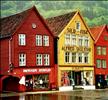

![[Dalen, Telemarken (i.e, Telemark), Norway] (LOC)](https://tcproduction.blob.core.windows.net/media/{f5a4efa0-964b-4750-959c-dfea4a86b5b3}.3175040364_4352b328c5_o.jpg)
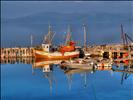



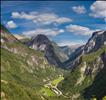

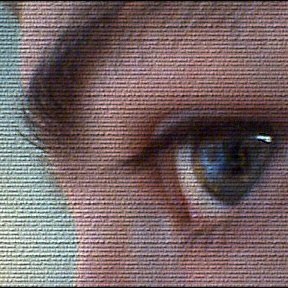



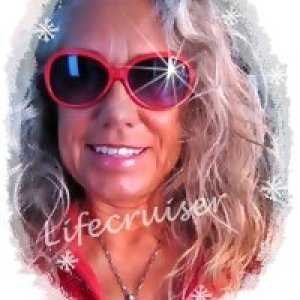



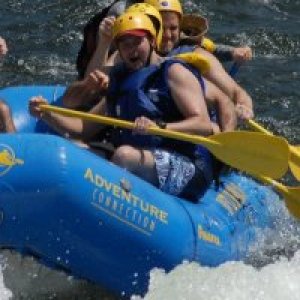






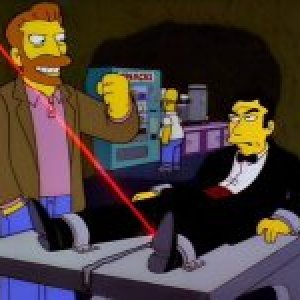

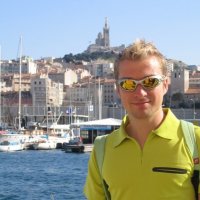

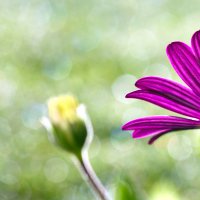
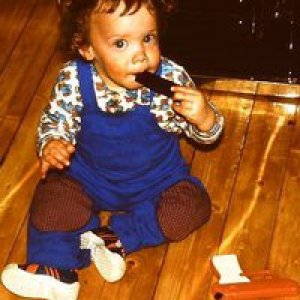


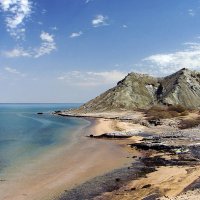
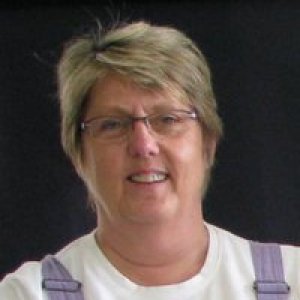

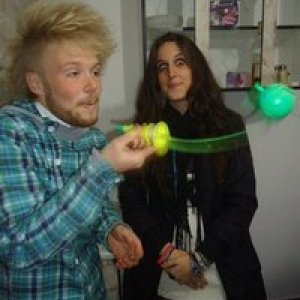
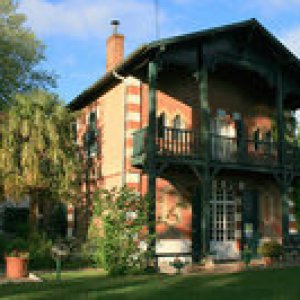

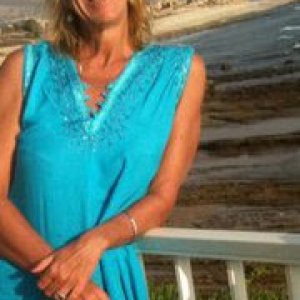

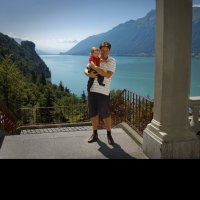









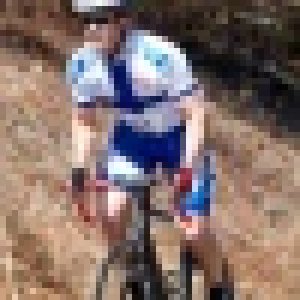



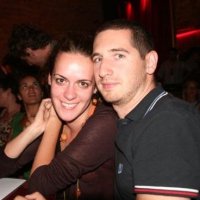
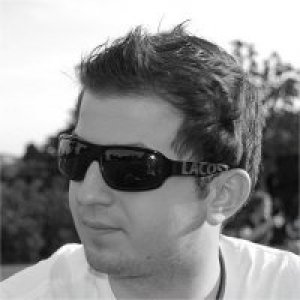
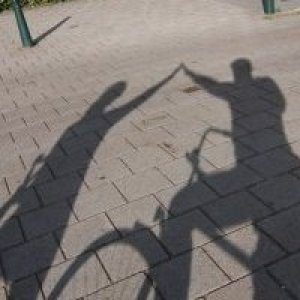





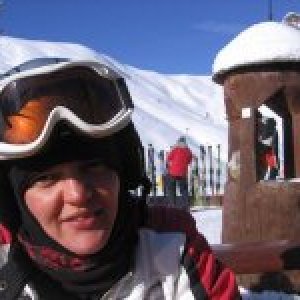

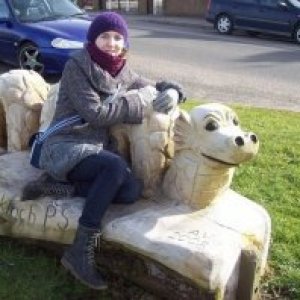





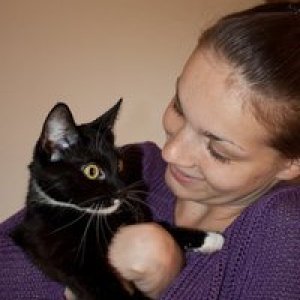
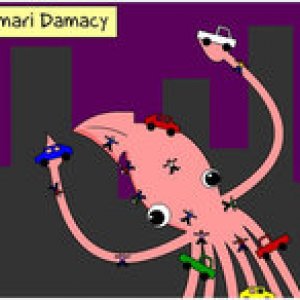
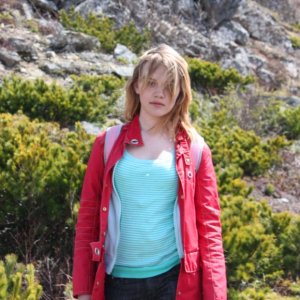
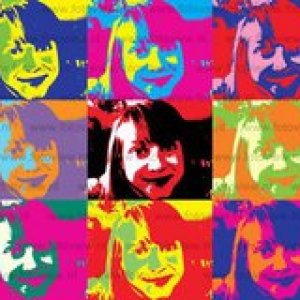


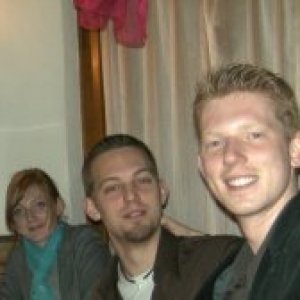

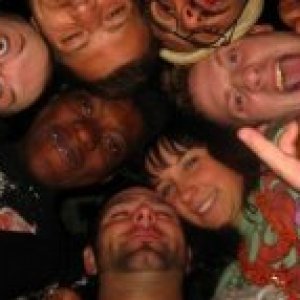



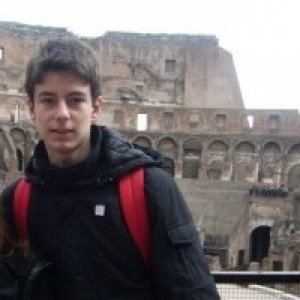



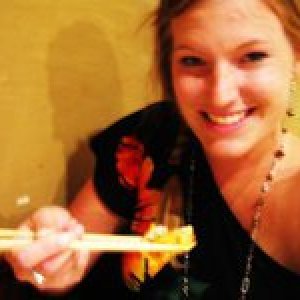

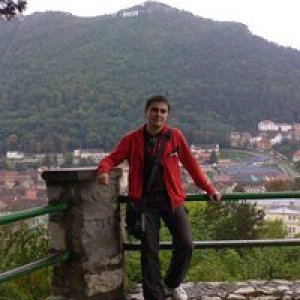
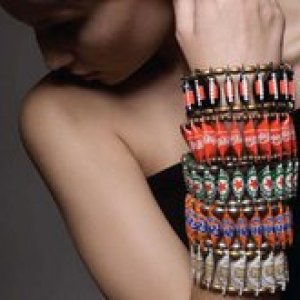
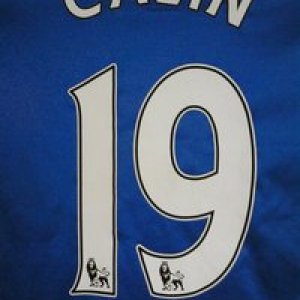
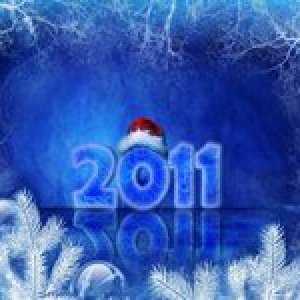







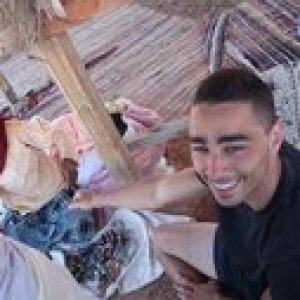
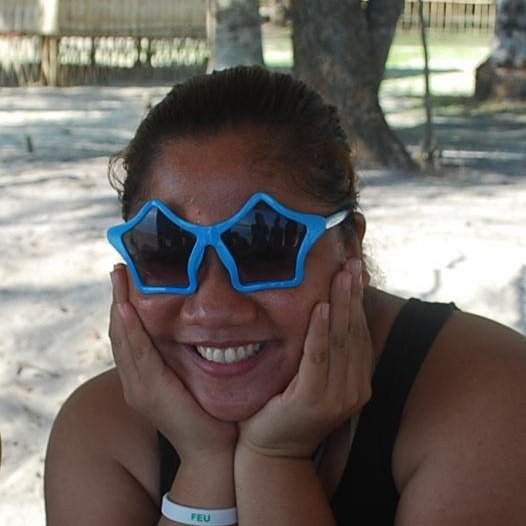

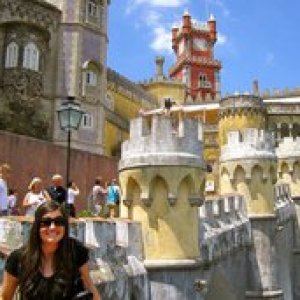


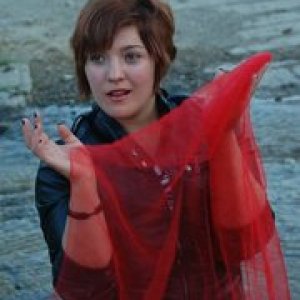

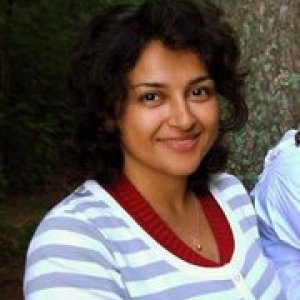
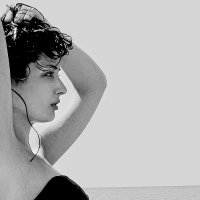
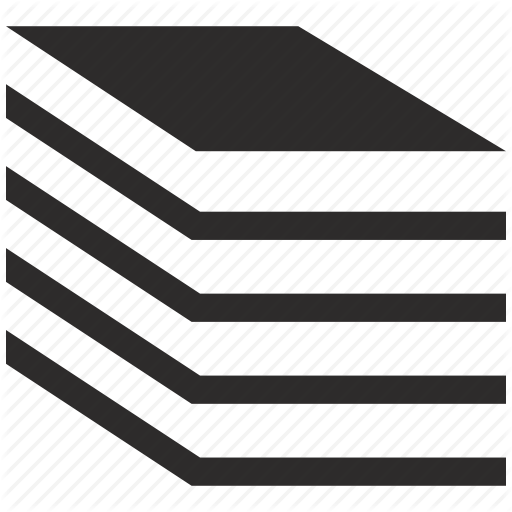
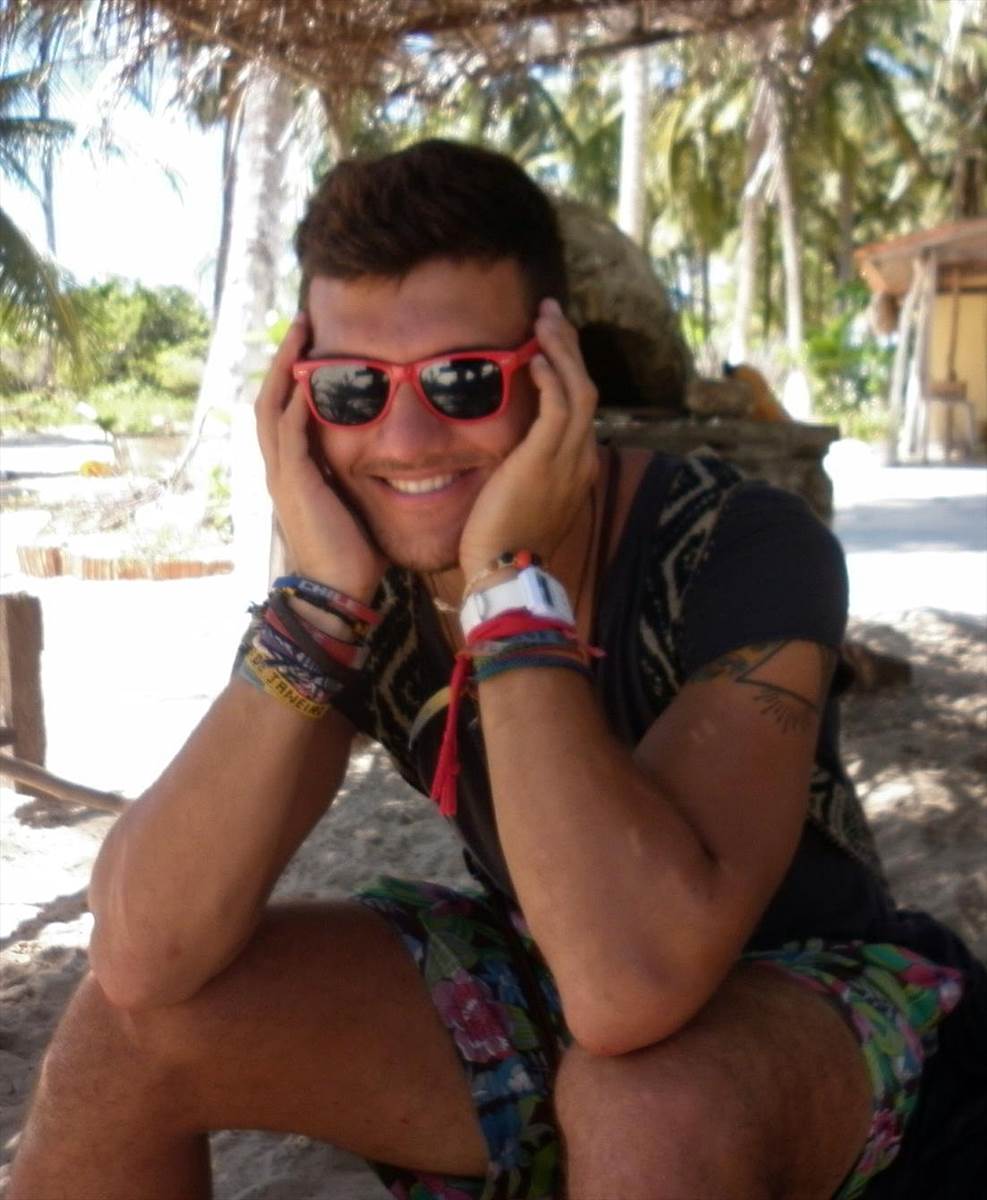

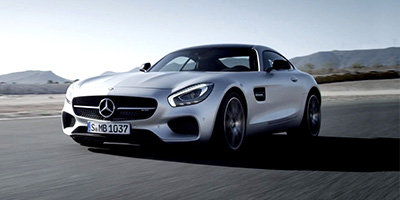



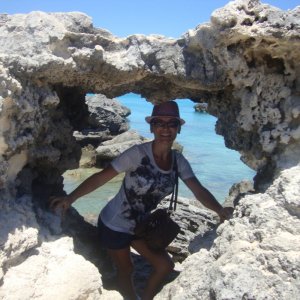

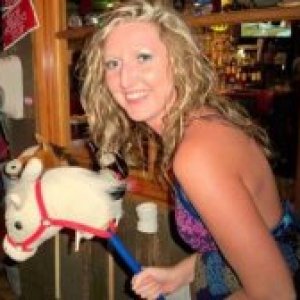
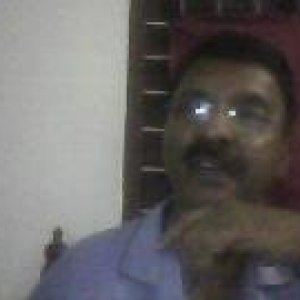
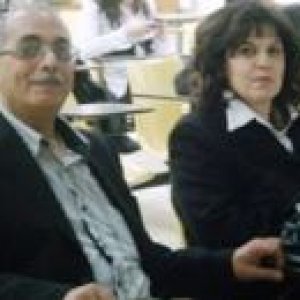
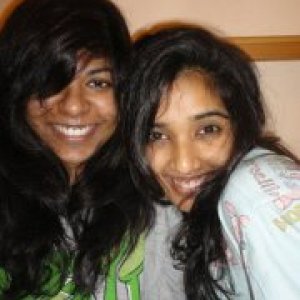
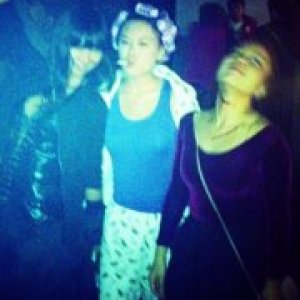
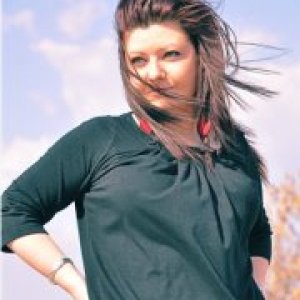


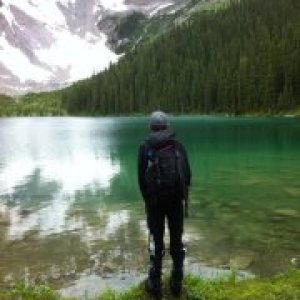

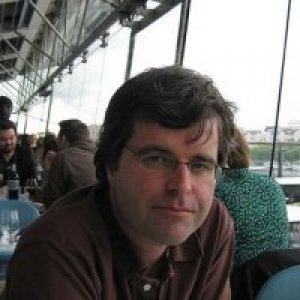


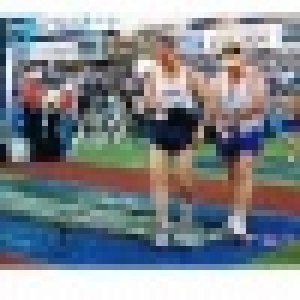


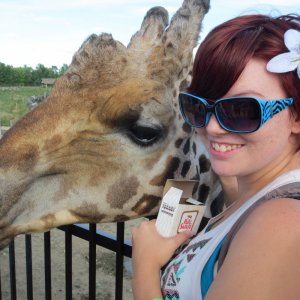

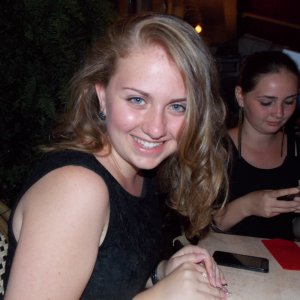
I liked
+nature & views +fjords +peace & quiet +special experiences in SvalbardI disliked
-very expensive